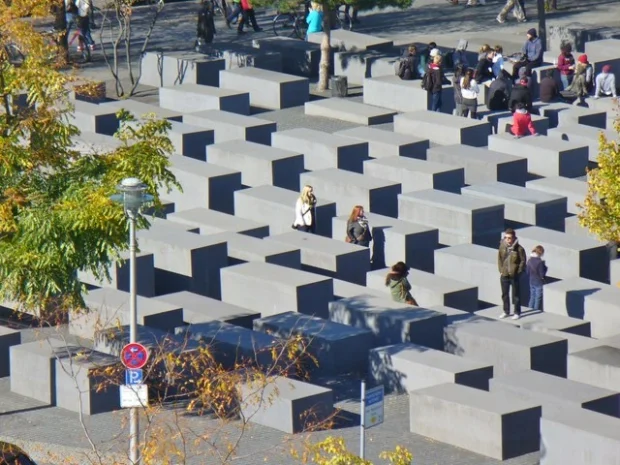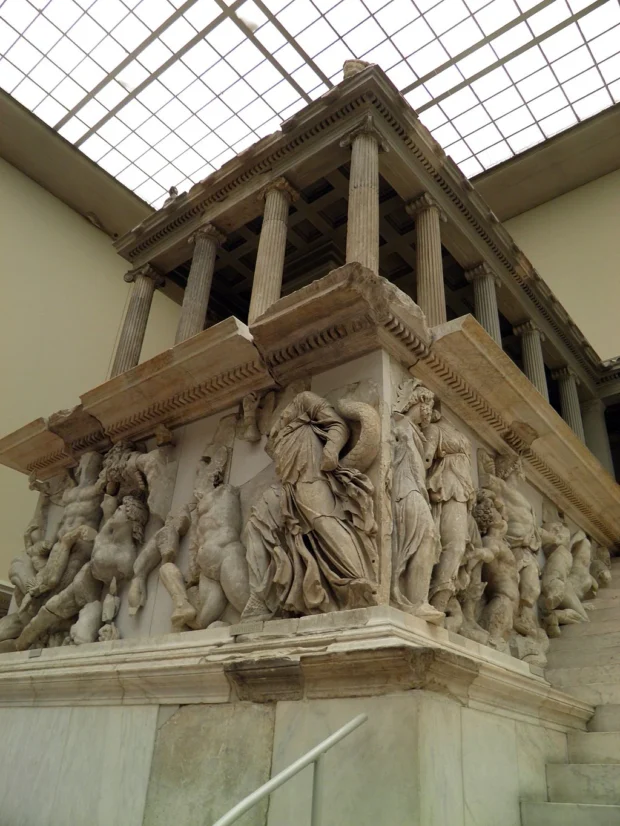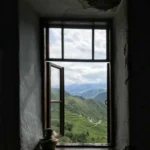Berlin is a city that wears its past and present on its sleeve. Every corner tells a story, blending centuries of history with a lively modern spirit. Walking through Berlin’s broad avenues and cozy alleys, you sense a city that never stops changing yet holds tight to its heritage. In this post, we will take a gentle stroll through some of Berlin’s most famous landmarks, sample traditional food from different districts, and share useful tips about getting around and local customs. If you want to feel the pulse of Berlin, join me on this friendly tour.
Table of Contents

Famous Landmarks Every Visitor Should See
Berlin’s landmarks are more than photo spots; they are windows into the city’s past. The Brandenburg Gate is perhaps the best-known symbol. Standing tall and proud, it has witnessed both division and unity. Originally built in the 18th century, this gate once marked the edge of the city. Today, it feels like Berlin’s beating heart, especially when locals gather beneath its columns for celebrations or quiet moments alike.
For more on Berlin’s symbols, the Brandenburg Gate post offers a closer look at this important landmark and its stories.

Not far from here is the Reichstag building, where Germany’s parliament meets. Its glass dome is a modern masterpiece, designed by architect Norman Foster. Climbing the spiral ramp inside gives wonderful views of the city and an unusual way to connect with Germany’s political heritage. Just walking the path, you feel the transparent democracy Berlin embodies.

For a deeper dive into history, the Berlin Wall’s East Side Gallery is a must. This open-air gallery is covered by colorful murals painted on the wall’s remains. Each painting tells stories about division, hope, and freedom. It is an unusual place where art meets memory. Nearby, the Topography of Terror museum stands on the former headquarters of the Nazi secret police, offering an honest look into dark chapters, balanced with the city’s resolve to remember responsibly.

Tasting Berlin’s Culinary Heritage
Berlin’s food reflects its diverse people and rich history. One cannot talk about Berlin without mentioning the Currywurst. This simple but delicious dish is sliced sausage drenched in a spicy ketchup sauce sprinkled with curry powder. Try it at a street vendor in Kreuzberg, a lively district known for its creative spirit and bustling markets. It is comfort food for locals and visitors alike.

For a taste of traditional German cuisine, head over to Mitte where you will find restaurants serving hearty dishes like Eisbein (pork knuckle) with sauerkraut. If you want something lighter, stop by one of the many Turkish food shops in Neukölln, which reflects Berlin’s strong Turkish community. Döner kebab, a sandwich of sliced meat and fresh vegetables wrapped in flatbread, was actually popularized in Berlin, quite a story for a city with many layers!

Finish your meal with a slice of Berliner Pfannkuchen-a jelly-filled doughnut. Don’t get confused if someone simply calls it a “Berliner.” This sweet treat makes a good souvenir memory of Berlin’s baking traditions.

Navigating Berlin: Easy Ways to Get Around
Berlin’s transport system is impressively efficient and easy to use. When arriving at Berlin Brandenburg Airport, you can reach the city center conveniently by train. The S-Bahn and U-Bahn trains connect most parts and run frequently until late at night.

Buying a day ticket gives you freedom to hop on and off public transport all day. The city is divided into zones; most tourists will stay inside Zone A and B, which includes main landmarks. Buses and trams complement train routes and offer a slower way to discover neighborhoods.

One interesting fact: many Berliners use bikes to get around. Renting a bike can be a fantastic way to see parks, canals, and even some hidden corners away from the busy roads. Always remember to follow traffic rules and give way to pedestrians.

Understanding Berlin’s Social Customs and Etiquette
Berliners can seem a bit reserved at first but are warm and friendly once you get to know them. Showing respect for privacy is important, so avoid loud conversations on public transport or streets. Greeting people with a simple “Guten Tag” (goo-ten tahk) means “Good day” and is a nice polite start to any interaction.

When visiting museums or churches, respect quiet zones and photography rules. It is common courtesy to keep noise low and dress modestly in religious sites.

Berliners appreciate punctuality. If you make plans or join a group tour, try to be on time. Saying “Danke schön” (dahn-kuh shurn) for thank you and “Bitte” (bi-ttuh) for please or you’re welcome will also earn smiles from locals. Lastly, tipping around 5-10% in restaurants is standard if you enjoyed the service.

Charming Neighborhoods and Hidden Corners
Besides popular landmarks, Berlin is full of less known gems. Prenzlauer Berg offers charming cobbled streets and small cafés perfect for people-watching. In the summer, Mauerpark hosts a lively flea market followed by karaoke sessions where everyone is encouraged to join-an unusual and joyful scene.

For lovers of architecture with stories, the Nikolaiviertel area has narrow medieval streets and old timber-framed houses. It feels like stepping back several centuries, quite different from Berlin’s broad modern avenues.

And along the River Spree, you can find quiet green spaces and art galleries, a nice spot to pause after museum visits. Keep an eye out for street art, often telling unexpected stories about Berlin’s cultural mix.
Why Berlin Feels Like a Living Museum
Walking through Berlin, you realize the city itself is a living museum-not just preserved relics but life and history moving side by side. Every neighborhood has layers of tales, from the scars of war to creative rebirths. It is a place where old bricks meet new ideas, where people remember but also look forward.
Listening to locals chatting over coffee or wandering through markets, you hear phrases like “Alles klar?” (ah-les klahr), meaning “Everything clear?”-a casual way to ask if all is good. It feels like Berlin invites you to be curious and to belong a little, even if just for a few days.
In Berlin, the past is never far, but neither is the promise of something new. This city asks you to take it slowly, look carefully, and enjoy both its striking landmarks and subtle daily rhythms.

Eastern Europe travel specialist uncovering hidden gems from the Baltics to the Balkans.
- Berlin Mitte June 2023 01 by ArildV on Wikimedia Commons – cc by-sa 4.0
- Berlin – 0266 – 16052015 – Brandenburger Tor by Pierre-Selim Huard on Wikimedia Commons – cc by 4.0
- Germany-04318 – Berlin Wall Story (30300790166) by Dennis G. Jarvis on Wikimedia Commons – cc by-sa 2.0
- Berlin Museumsinsel Fernsehturm by Thomas Wolf, www.foto-tw.de on Wikimedia Commons – cc by-sa 3.0
- Berlin Reichstag BW 2 by Berthold Werner on Wikimedia Commons – cc by-sa 3.0
- CHECKPOINT CHARLIE BERLIN GERMANY APRIL 2012 (7280664982) by calflier001 on Wikimedia Commons – cc by-sa 2.0
- Berlin-East side gallery – panoramio by Modris Putns on Wikimedia Commons – cc by-sa 3.0
- 20220806 Berlin Cathedral 02 by Flocci Nivis on Wikimedia Commons – cc by 4.0
- Alexanderplatz, 2024 (01) by Bahnfrend on Wikimedia Commons – cc by-sa 4.0
- Christmas market Potsdamer Platz by KlemensM on Wikimedia Commons – cc0
- Berlin Schloss Charlottenburg (S41 2558) by Michael.F.H.Barth on Wikimedia Commons – cc by-sa 4.0
- Gendarmenmarkt Berlin 2009 by Jorge Lascar on Wikimedia Commons – cc by-sa 3.0
- Sowjetisches Ehrenmal, Tiergarten, Berlin, 170514, ako by Ansgar Koreng on Wikimedia Commons – cc by-sa 4.0
- Berlin – Holocaust-Mahnmal (Holocaust Memorial) – geo.hlipp.de – 42621 by Colin Smith on geo.hlipp.de on Wikimedia Commons – cc by-sa 2.0
- West Frieze, Gigantomachy Frieze, Pergamon Altar, Pergamon Museum, Berlin (5902967702) by Carole Raddato from FRANKFURT, Germany on Wikimedia Commons – cc by-sa 2.0
- Germany-04418 – Topography of Terror (29704844563) by Dennis G. Jarvis on Wikimedia Commons – cc by-sa 2.0
